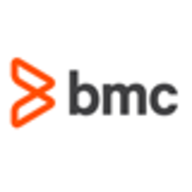

Control-M and JAMS compete in the automation solutions category, both offering unique strengths. Control-M appears to have the upper hand in terms of comprehensive platform integration, while JAMS offers an easier, more user-friendly scheduling process.
Features: Control-M supports complex scheduling across varied environments with modules like AFT, SAP, and Informatica, making it ideal for large-scale operations that process high-volume data. Additionally, its cross-platform support allows seamless integration with other systems. JAMS, on the other hand, promotes straightforward job management with natural language scheduling, PowerShell integration, and interactive agents that facilitate job scheduling using a familiar syntax.
Room for Improvement: Control-M could advance by enhancing output analysis with built-in arithmetic operations and broader report customization options, minimizing reliance on external tools. For JAMS, improvements could be made in search functionality and transitioning towards a fully web-based interface to boost accessibility. Both solutions could also enhance UX and technical capabilities further.
Ease of Deployment and Customer Service: Control-M offers versatile deployment options, suitable for on-premises, hybrid, and cloud environments, although its technical support can be slow to respond. JAMS provides simpler implementation and efficient customer service, with users often praising its responsiveness and deployment flexibility across different models.
Pricing and ROI: Control-M's pricing reflects its extensive capabilities, being a higher-cost option. It delivers strong ROI for large-scale operations by reducing manual work and boosting efficiency. Conversely, JAMS is competitively priced with a straightforward licensing model. Its scalable approach delivers cost-efficiency for medium to large businesses, making it an attractive option for organizations balancing cost with functionality.
The main return on investment with Helix Control-M has been a reduction in downtime and minimization of manual interventions, which has improved our operational efficiency.
You can run a million batch jobs or tasks at night when all of your highly skilled people are at home sleeping.
By implementing automation tools, you can minimize human errors and improve efficiency.
The design of JAMS makes it very easy to copy jobs and make minimal changes while ensuring functionality.
They quickly evolve with changing technology trends, easily adopt new features, and incorporate them into the product.
The support is accurate, and BMC is always ready to help with queries and complex incidents.
The technical support is very polite, helpful, and available 24/7.
Their response is prompt, exemplifying how support should be.
They are very quick to respond depending on the issue's severity.
We contacted JAMS vendor, who guided us through the necessary steps, and after following their guidance, everything was resolved.
Our license doesn't limit our ability to configure Control-M as needed, allowing us to easily create new agents or environments.
It can absorb more workload wherever needed.
As the workload on Control-M increases, its scalability is much higher.
We might be underutilizing it, but as more jobs require processing, additional servers would be necessary.
JAMS's scalability is noteworthy; we run 6,000 jobs per day without facing any problems.
The downtime is higher compared to AWS.
The testing and development phases need to be more rigorous before releasing patches.
Once properly implemented, the system becomes very stable, which is one of its strongest attributes.
We experience periods of major incidents annually due to capacity constraints, which result in job failures.
Being on the new version, there's been zero downtime.
They could provide more documentation and tutorials to make the initial setup easier to understand.
We've experienced main problems with MFTE where having one setup means when an error occurs, the entire service goes down.
Documentation should be maintained for all versions since they provided the application.
Another area for improvement would be the addition of source control for jobs internally, as this feature would solve several problems for me.
A major improvement would be the integration of AI to help us accomplish various tasks.
If around 5,000 or more jobs run at a time, JAMS slows down, and we have to wait around five to 10 minutes or restart JAMS scheduler services.
The licensing cost is very high, and they often consider switching to IBM Workload Scheduler or other options.
Control-M tends to be more expensive compared to other solutions, but users get great value from it.
Control-M is among the highest-priced solutions in the market.
The price is fair considering the functionality and importance of the tool, although the increase did unsettle our management.
Automation is more advanced, deployment is fast, and version control has been simplified.
The user interface is comprehensive and lets me view all my jobs on one page, monitor everything, and access the job history.
It is easy to integrate Control-M with technologies for data ops or DevOps processes as things change, and it is not complex compared to other workload automation tools available in the market.
JAMS has positively impacted my organization by completely removing the headache of scheduling jobs, not just for the organization but for all internal operations teams need.
This efficient feature has been invaluable, enabling us to streamline our workflow and enhance productivity.
The most valuable feature of JAMS is its user-friendly interface, especially after upgrading from version six to seven.
| Product | Market Share (%) |
|---|---|
| Control-M | 18.9% |
| JAMS | 2.1% |
| Other | 79.0% |


| Company Size | Count |
|---|---|
| Small Business | 26 |
| Midsize Enterprise | 13 |
| Large Enterprise | 114 |
| Company Size | Count |
|---|---|
| Small Business | 11 |
| Midsize Enterprise | 8 |
| Large Enterprise | 18 |
Control-M by BMC is engineered to manage hybrid cloud workflows, offering orchestration capabilities starting at $29,000 annually. Aimed at helping growing teams, it efficiently supports cross-environment scheduling and automation needs.
Control-M offers robust cross-platform scheduling, automation, and integration with applications such as SAP and Informatica. Users appreciate its ease of use with a graphical interface, centralized management, and monitoring capabilities. Advanced features, including Managed File Transfer, automated error handling, and real-time alerts, enhance productivity. The ability to unify workflows and support diverse environments makes Control-M a trusted tool in many sectors. While improvements in reporting flexibility and API integration with tools like ServiceNow are needed, addressing performance issues during upgrades could enhance its value. Offering improved support for new technologies and cloud environments is beneficial, with cost-effectiveness being a consideration.
What are the key features of Control-M?Control-M is leveraged in industries like finance for enterprise scheduling and data management, supporting mainframe, Linux, Unix, Windows, and cloud platforms. It contributes to workflow orchestration and workload automation, improving operational efficiency and enhancing IT infrastructure across those environments.
JAMS offers efficient automation and scheduling with strong capabilities in planning, dependency management, and multi-platform support. Its intuitive interface and robust tools assist in managing complex workflows for enhanced resource allocation.
JAMS stands out for its blend of automation and scheduling capabilities, making it suitable for handling complex workflows across platforms. Its features such as batch scheduling, natural language scheduling, and interactive agents promote seamless integration with other tools like PowerShell. The focus on metrics and notifications ensures users are informed about operational efficiency enhancements. While JAMS is effective in many areas, users report a need for improved simulation for termination processes and a more intuitive client setup. They see potential in enhanced search functions, better exception handling, and greater transparency in custom execution. The current setup challenges like disappearing options and mobile accessibility can affect user satisfaction. Including a fully web-based client and improving documentation could add value.
What are JAMS' key features?
What benefits should users consider?
Organizations using JAMS for workflow and batch job automation leverage its capabilities for SSIS, SQL procedures, and Python scripts. JAMS supports file automation and managed file transfers across environments like AWS and Azure. Users employ JAMS for data management, reporting, and integration tasks, including handling holiday-aware scheduling for improved task coordination.
We monitor all Workload Automation reviews to prevent fraudulent reviews and keep review quality high. We do not post reviews by company employees or direct competitors. We validate each review for authenticity via cross-reference with LinkedIn, and personal follow-up with the reviewer when necessary.